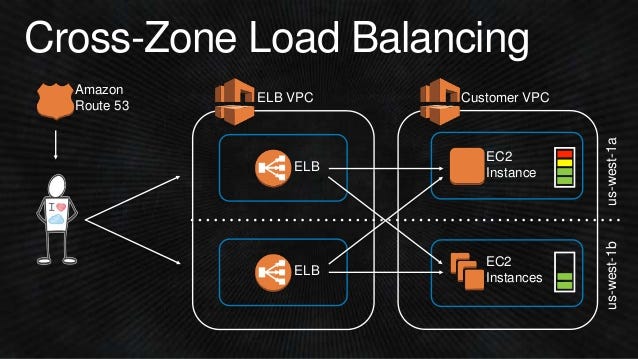In the realm of cloud computing, high availability and reliability are crucial for maintaining the performance and stability of applications. Amazon Web Services (AWS) offers a robust solution for achieving these objectives through Cross-Zone Load Balancing. In this article, we’ll explore what Cross-Zone Load Balancing is, how it works, and the benefits it brings to your Amazon EC2 infrastructure.

What is Cross-Zone Load Balancing?
Cross-Zone Load Balancing is a feature of AWS Elastic Load Balancing (ELB) that distributes incoming traffic across multiple Availability Zones (AZs) within a region. By leveraging this feature, you ensure that your application’s traffic is evenly spread across all the healthy instances in different AZs, rather than being restricted to instances within a single AZ.
For a visual walkthrough of the concepts covered in this article, check out my YouTube playlist:-
How Does It Work?
When you configure your Elastic Load Balancer to use Cross-Zone Load Balancing, it automatically routes incoming traffic to all registered EC2 instances across the configured AZs. Here’s a simplified view of the process:
- Traffic Distribution: The load balancer receives incoming requests and distributes them evenly across all the healthy EC2 instances, regardless of their AZ.
- Health Checks: The load balancer continuously performs health checks on all instances to ensure they are operational. If an instance becomes unhealthy, the load balancer stops sending traffic to it until it recovers.
- Automatic Scaling: As your application scales, the load balancer adapts by redistributing traffic to new instances in various AZs, maintaining balanced load and high availability.
Benefits of Cross-Zone Load Balancing
- Enhanced Availability: By distributing traffic across multiple AZs, Cross-Zone Load Balancing helps mitigate the risk of single points of failure. If one AZ experiences issues, your application remains accessible through instances in other AZs.
- Improved Performance: Evenly distributing traffic helps in avoiding overload on instances in a single AZ, leading to more consistent performance across your application.
- Simplified Management: Cross-Zone Load Balancing reduces the complexity of managing traffic distribution manually. It ensures that all instances, irrespective of their AZ, contribute equally to handling incoming requests.
- Cost Efficiency: By balancing traffic evenly, you can optimize resource utilization and potentially reduce costs associated with underutilized instances.
Configuring Cross-Zone Load Balancing
To enable Cross-Zone Load Balancing, follow these steps:
- Navigate to the ELB Console: Open the AWS Management Console and go to the Elastic Load Balancing section.
- Select Your Load Balancer: Choose the load balancer you want to configure.
- Modify Settings: In the load balancer’s settings, look for the option to enable Cross-Zone Load Balancing and activate it.
- Save Changes: Apply the changes and monitor the load balancer to ensure it’s distributing traffic as expected.
Conclusion
Cross-Zone Load Balancing is a powerful feature that enhances the availability, reliability, and performance of your EC2 instances. By distributing traffic across multiple AZs, it helps safeguard your application against outages and ensures a smooth user experience. Whether you’re running a high-traffic website or a critical application, leveraging Cross-Zone Load Balancing can significantly improve your cloud infrastructure’s resilience and efficiency.
Connect with Me:
- YouTube ► S3 CloudHub Channel
- Facebook ► S3 CloudHub Page
- Medium ► S3 CloudHub Blog
- Demo Reference ► GitHub Repository
- Blog ► S3 CloudHub Blogspot
- Dev ► S3 CloudHub on Dev.to

No comments:
Post a Comment